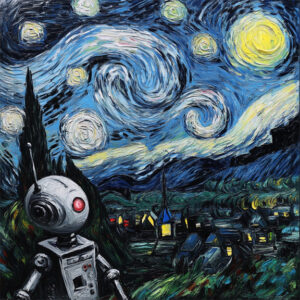 AI generated works have already disrupted the realm of art. As noted in the previous essay, this is a big problem for content art (art whose value is derived from what it is or how it can be used). However, I will show that named art might enjoy some safety from AI incursions.
AI generated works have already disrupted the realm of art. As noted in the previous essay, this is a big problem for content art (art whose value is derived from what it is or how it can be used). However, I will show that named art might enjoy some safety from AI incursions.
Named art, at least in my (mis)usage, is a work whose value arises primarily from the name and fame of its creator. Historical examples include Picasso, van Gogh, and Rembrandt. An anecdote illustrates the key feature of named art.
Some years ago, I attended an art show and sale at Florida State University with a friend. She pointed to a small pencil sketch of a bird that was priced at $1500. She then pointed to a nearby sketch of equivalent quality that was $250. Since I had taught aesthetics for years, she asked me what justified the difference. After all, the sketches were about the same size, in the same medium, in the same realistic style and were executed with similar skill. My response was to point to the names: one artist was better known than the other. If a clever rogue managed to switch the names and prices on the works, the purchasers would probably convince themselves they were worth the price—because of the names. The nature of named art can also be shown by the following discussion.
Imagine, if you will, that an amazing painting is found in an attic that might be a lost van Gogh. If the value of works of art was based on the work itself, we would not need to know who created it to know its worth. But the value of the might-be-Gogh depends on whether it can be verified as a real-Gogh. It is easy to imagine the experts first confirm it is genuine (making it worth millions), then other experts confirm it was painted by Rick von Gogh (making it worth little), and then later experts re-affirm that it is genuine van Gogh (making it worth millions again). While nothing about the work has changed, its value would have fluctuated dramatically, because what gives it value is the creator and not the qualities of the work as art. That is, a van Gogh is not worth millions because the painting is thousands of times better than a lesser work, but because it was created by van Gogh and the art economy has said that it is worth that much. As such, the value of named art is not a function of the aesthetic value of the work, but of the name value of the work. This feature provides the realm of named art with an amazing defense against the incursion of AI.
While an AI might be able to crank out masterpieces in a style indistinguishable from van Gogh, the AI can never be Vincent van Gogh. Named art gets its value from who created it rather than from what it is. So works created by an AI in the style of van Gogh will not be of value to those who only want the works of van Gogh. This can be generalized: those looking for works created by Artist X will not be interested in buying AI created art; they want works created by X. As such, if people value works because of the creator, named art will be safe from the incursion of AI. But one might wonder about AI created forgeries.
While I expect that AI will be used to forge works, successful deceit would not disprove my claim about named art being safe from AI incursion. The purchaser is still buying the work because they think it is by a specific artist; they are just being deceived. This is not to deny that AI forgeries will not be a problem, just that this would be a forgery problem and not an AI replacing artists problem (other than stealing the job of forgers, of course).
It might be objected that named art will not be safe from AI art because AI systems can crank out works at an alarming rate and, presumably, low cost. While this does mean that content artists are in danger from AI, it does not impact the “named” artists. After all, the fact that millions of human artists have produced millions of drawings and paintings does not lower the value of a Monet or Dali; the value placed on such paintings is independent of the works of these “lesser” artists. The same should hold true of AI art: even if one could click a button and get 100,000 original images ready to be painted onto canvas by a robot, the sale price of the Mona Lisa would not be diminished.
If AI systems become advanced enough, they might themselves become “named” artists with collectors wanting a work by Vincent van Robogogh because it was created by Robogogh. But that is a matter for the future.

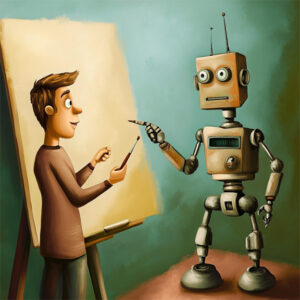 This essay changes the focus from defining art to the economics of art. This discussion requires making a broad and rough distinction between two classes of art and creators. The first class of art is called “named art.” This is art whose value derives predominantly from the name and fame of its creator. Works by Picasso, van Gogh, Rembrandt and the like fall into this category. Artists who are enjoying a fleeting fame also fall into this category, at least so long as their name is what matters. This is not to deny that such art can have great and wonderful qualities of its own; but the defining feature is the creator rather than the content.
This essay changes the focus from defining art to the economics of art. This discussion requires making a broad and rough distinction between two classes of art and creators. The first class of art is called “named art.” This is art whose value derives predominantly from the name and fame of its creator. Works by Picasso, van Gogh, Rembrandt and the like fall into this category. Artists who are enjoying a fleeting fame also fall into this category, at least so long as their name is what matters. This is not to deny that such art can have great and wonderful qualities of its own; but the defining feature is the creator rather than the content.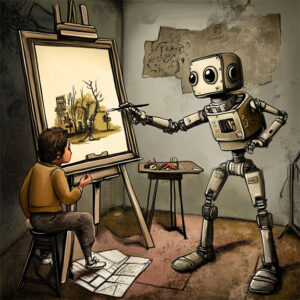 While it is reasonable to consider the qualities of the creator when determining whether a work is art, it also makes sense to consider only the qualities of the work. On this approach, what makes a work art are the relevant qualities of that work, whatever these qualities might me. It also makes sense to consider that the effect these qualities on the audience could play a role in determining whether a work is art. For example,
While it is reasonable to consider the qualities of the creator when determining whether a work is art, it also makes sense to consider only the qualities of the work. On this approach, what makes a work art are the relevant qualities of that work, whatever these qualities might me. It also makes sense to consider that the effect these qualities on the audience could play a role in determining whether a work is art. For example, 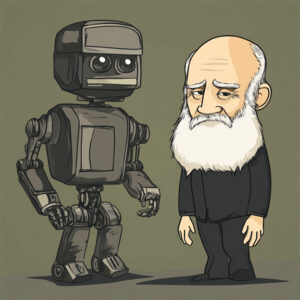 As a philosopher, my discussions of art and AI tend to be on meta-aesthetic topics, such as trying to define “art” or arguing about whether an AI can create true art. But there are pragmatic concerns about AI taking jobs from artists and changing the field of art.
As a philosopher, my discussions of art and AI tend to be on meta-aesthetic topics, such as trying to define “art” or arguing about whether an AI can create true art. But there are pragmatic concerns about AI taking jobs from artists and changing the field of art. 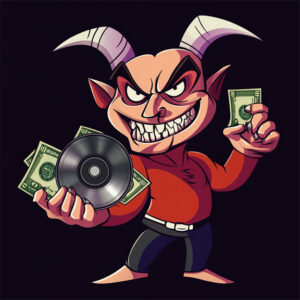 The rap musician Sean “Diddy” Combs has been
The rap musician Sean “Diddy” Combs has been  In the United States, the left seems to dominate comedy. Comedians like
In the United States, the left seems to dominate comedy. Comedians like 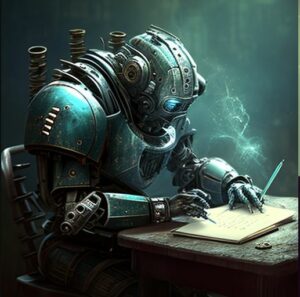 An iron rule of technology is that any technology that can be used for pornography will be used for pornography. A more recent one is that any technology that can be used for grifting will be used for grifting.
An iron rule of technology is that any technology that can be used for pornography will be used for pornography. A more recent one is that any technology that can be used for grifting will be used for grifting. 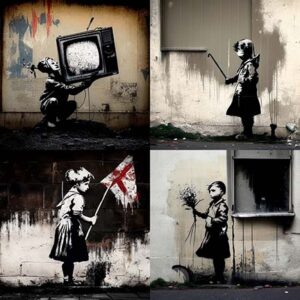 Thanks to AI image generators such as
Thanks to AI image generators such as  Being nerdtastic by nature, my nerd sense picks up disturbances in nerd culture. One of the loudest types of disturbances is when people express outrage at gender and race swapping involving established characters.
Being nerdtastic by nature, my nerd sense picks up disturbances in nerd culture. One of the loudest types of disturbances is when people express outrage at gender and race swapping involving established characters.  The original Mary Sue was created in 1973 by Paula Smith as a parody of Star Trek fan fiction. A Mary Sue character is usually presented as inexplicably competent, possessing special talents or powers, enjoying the admiration of others, lacking in weaknesses and flaws, attractive, and virtuous. A Mary Sue is usually a young woman, but there are male versions called “Gary Stu” or “Marty Stu.”
The original Mary Sue was created in 1973 by Paula Smith as a parody of Star Trek fan fiction. A Mary Sue character is usually presented as inexplicably competent, possessing special talents or powers, enjoying the admiration of others, lacking in weaknesses and flaws, attractive, and virtuous. A Mary Sue is usually a young woman, but there are male versions called “Gary Stu” or “Marty Stu.”